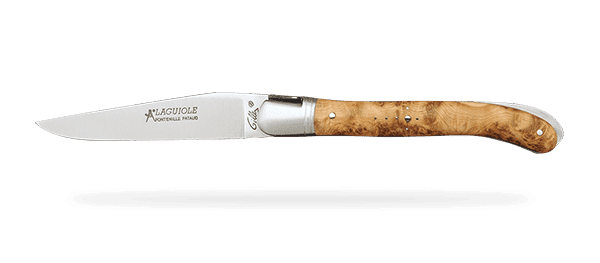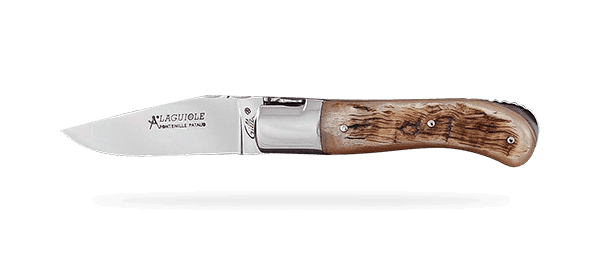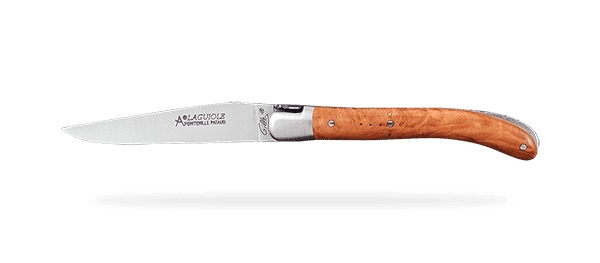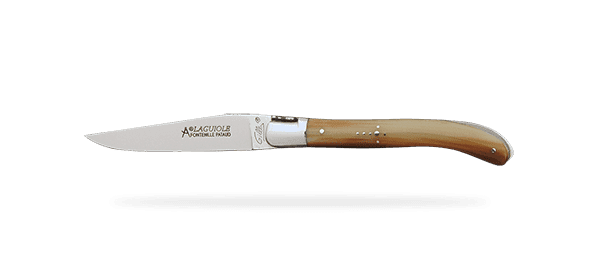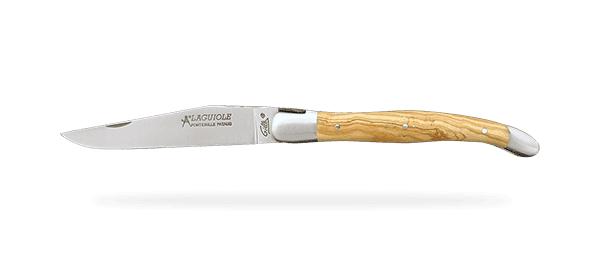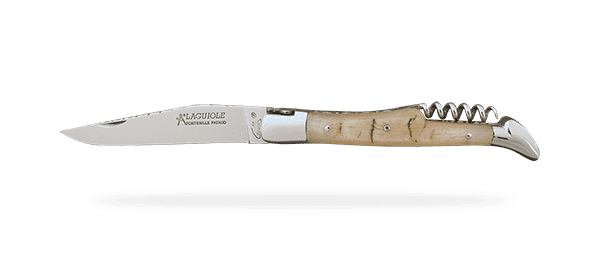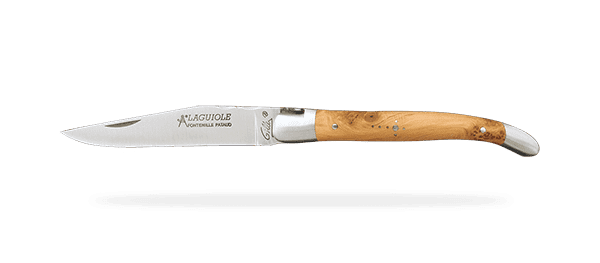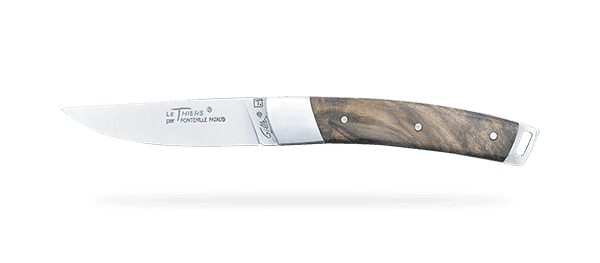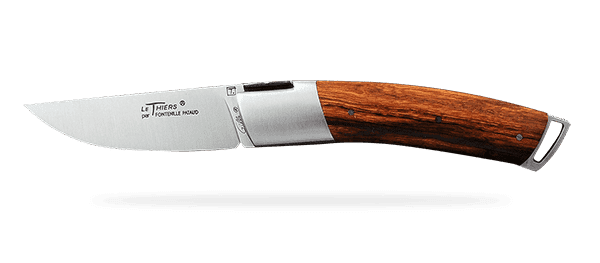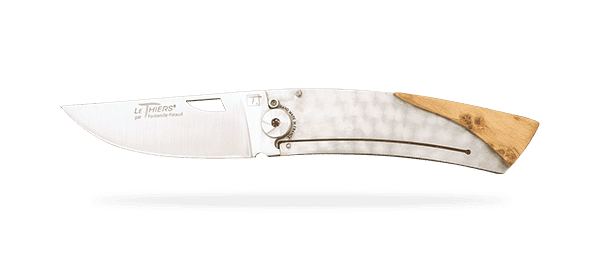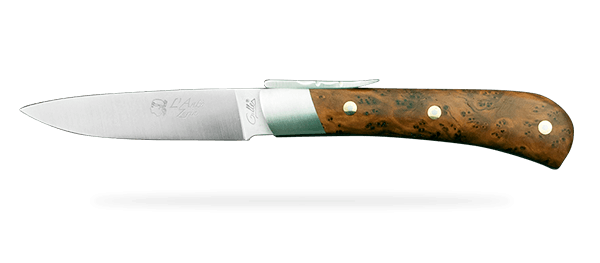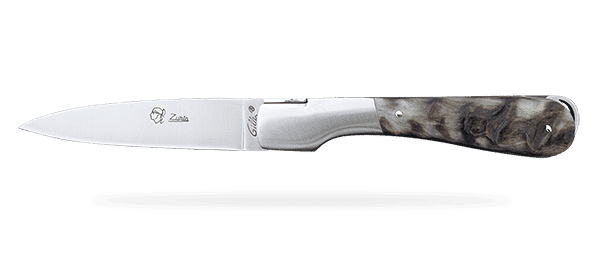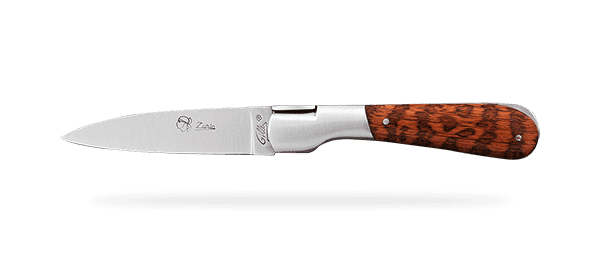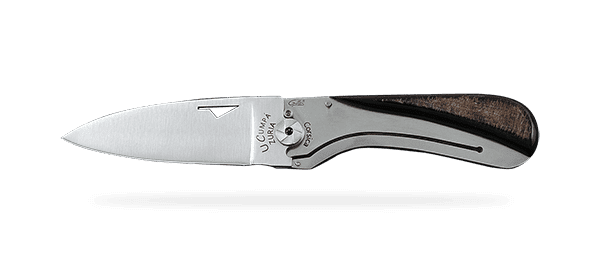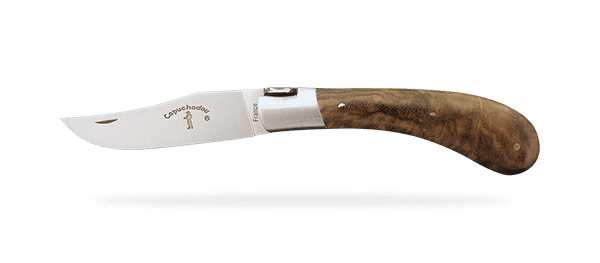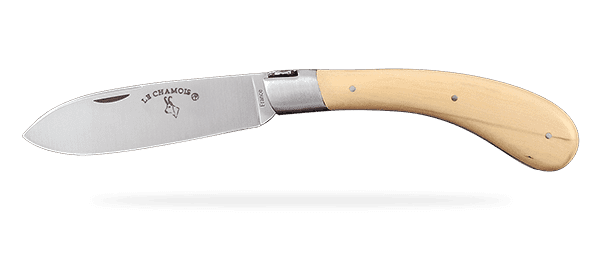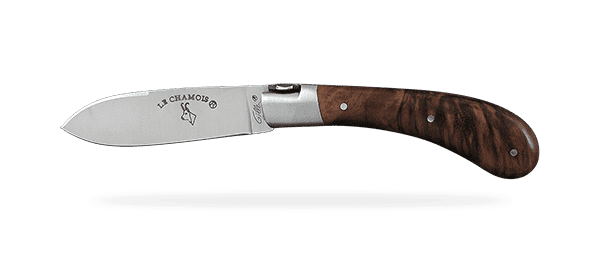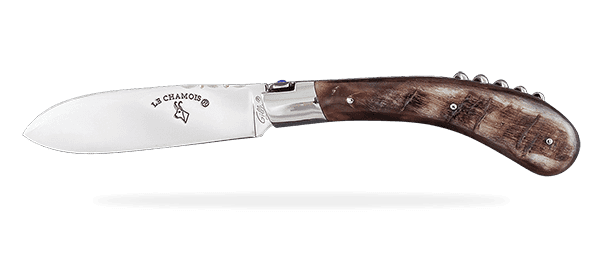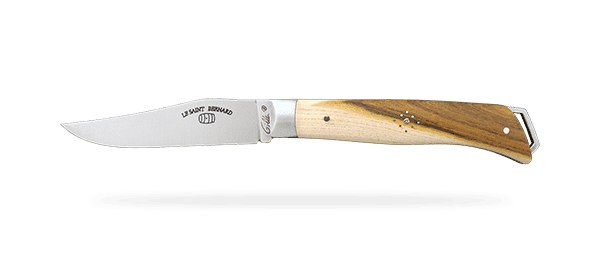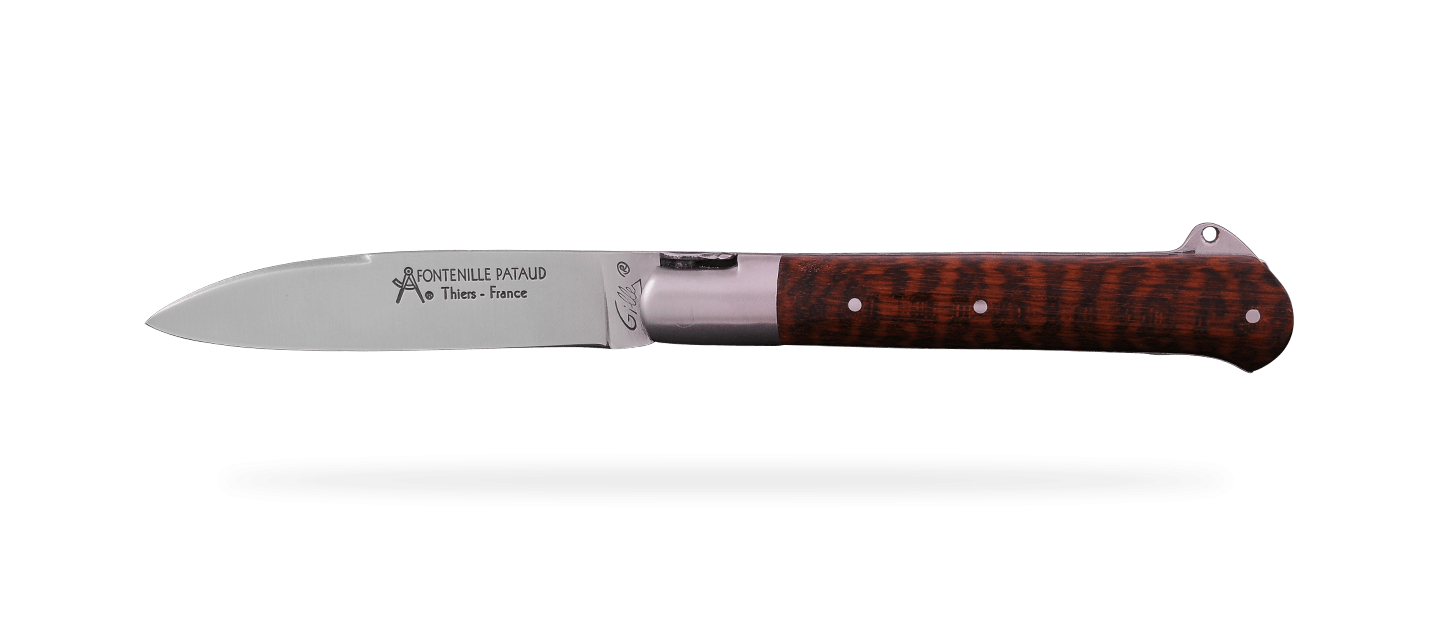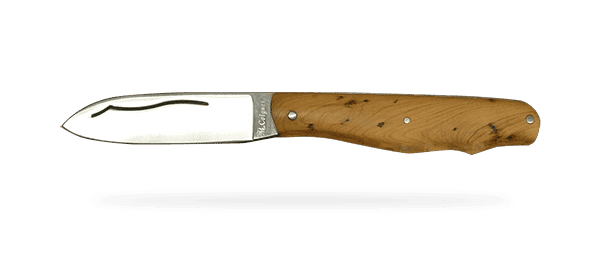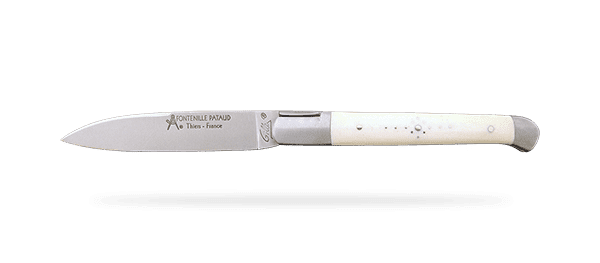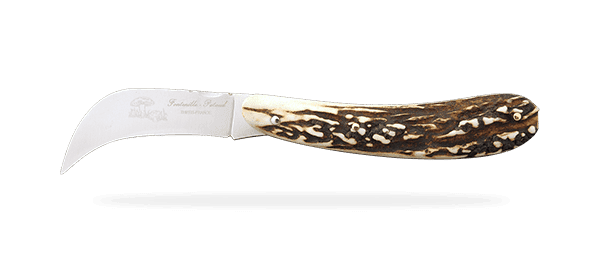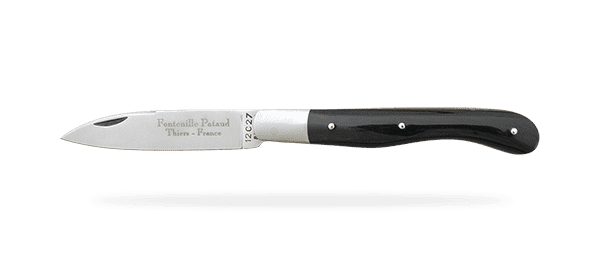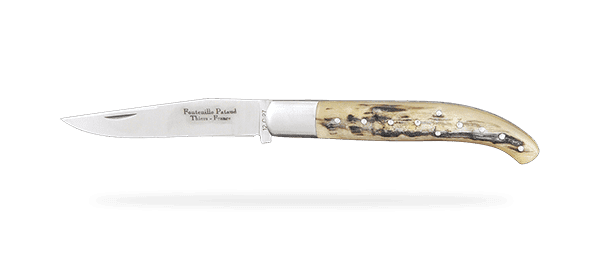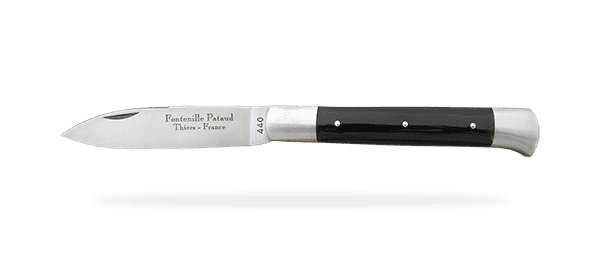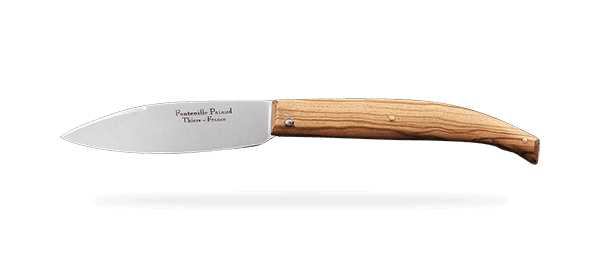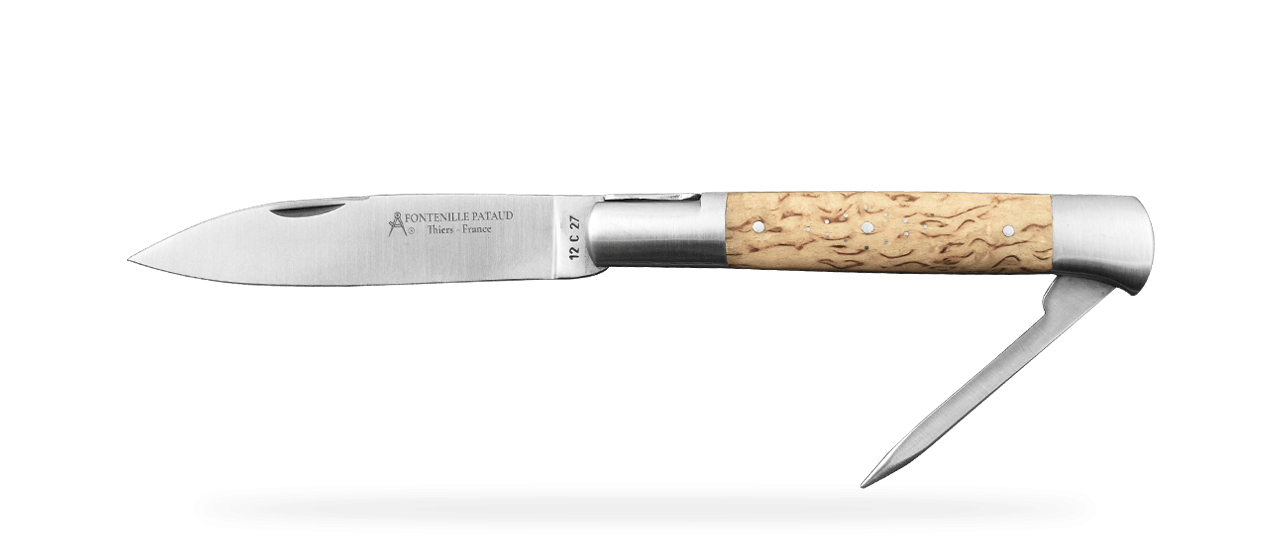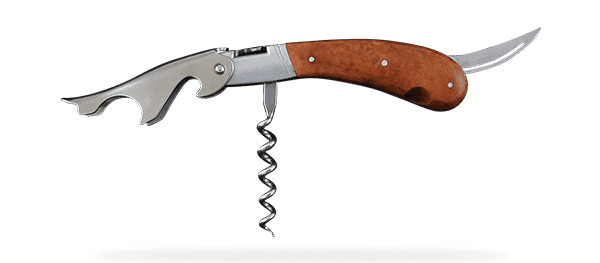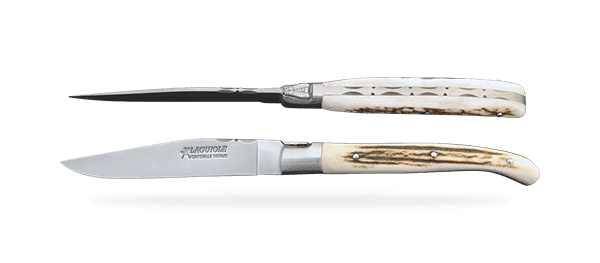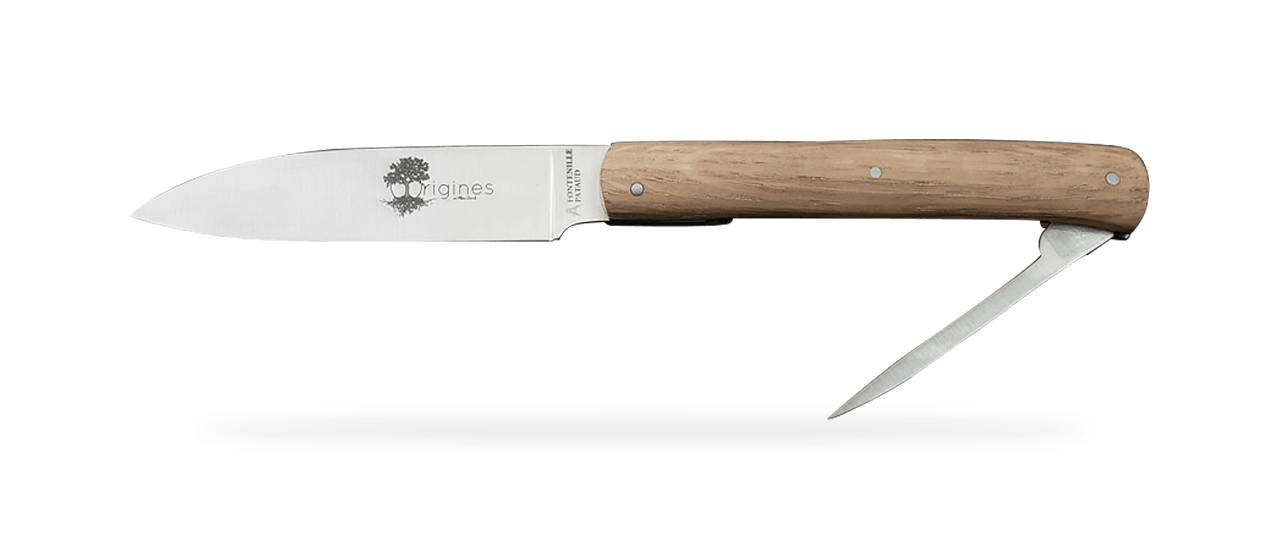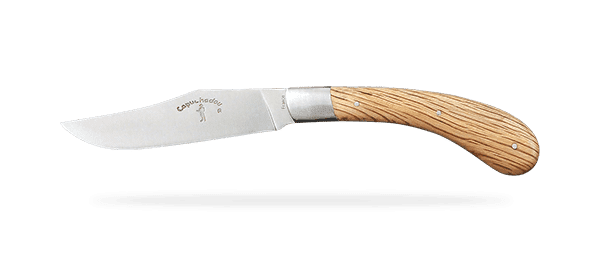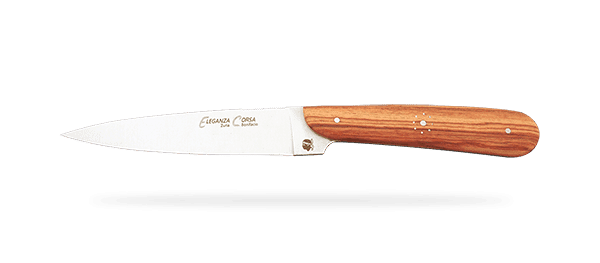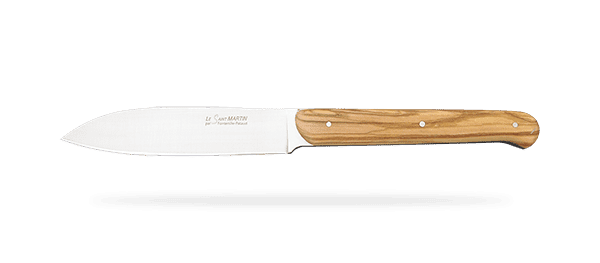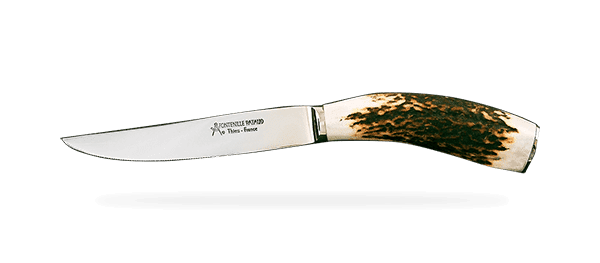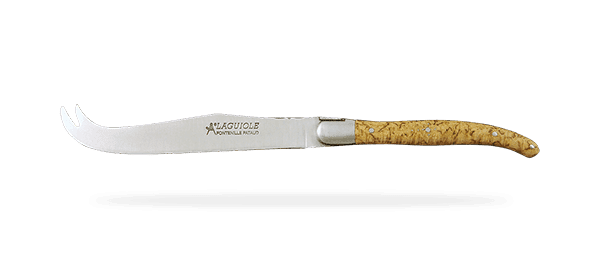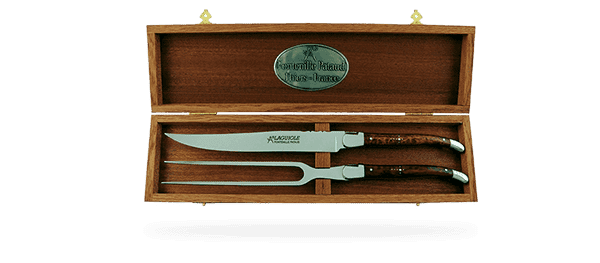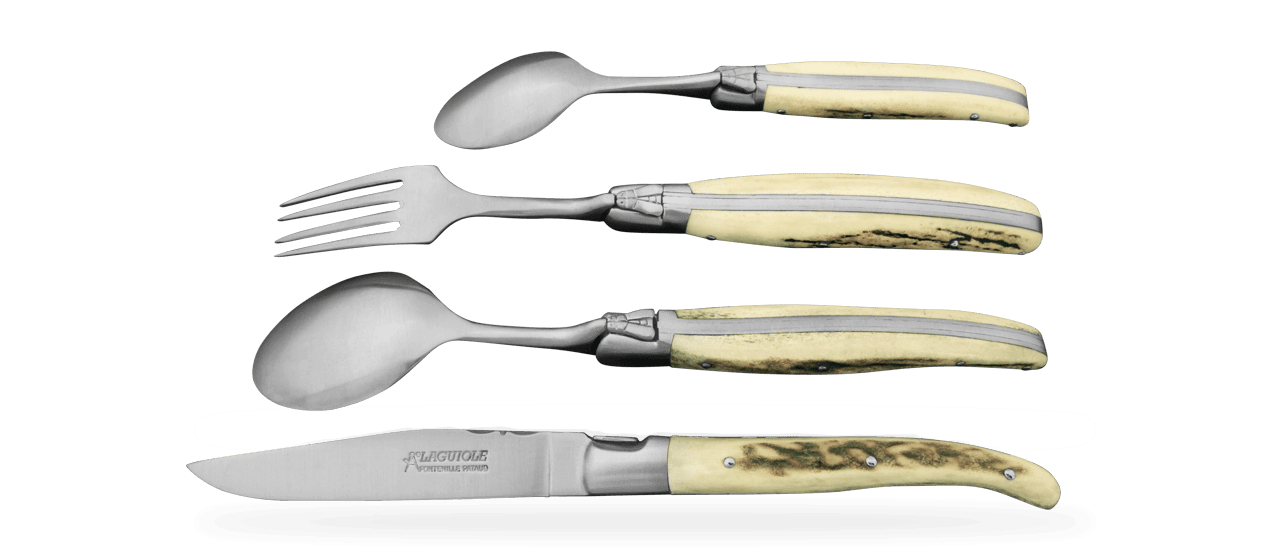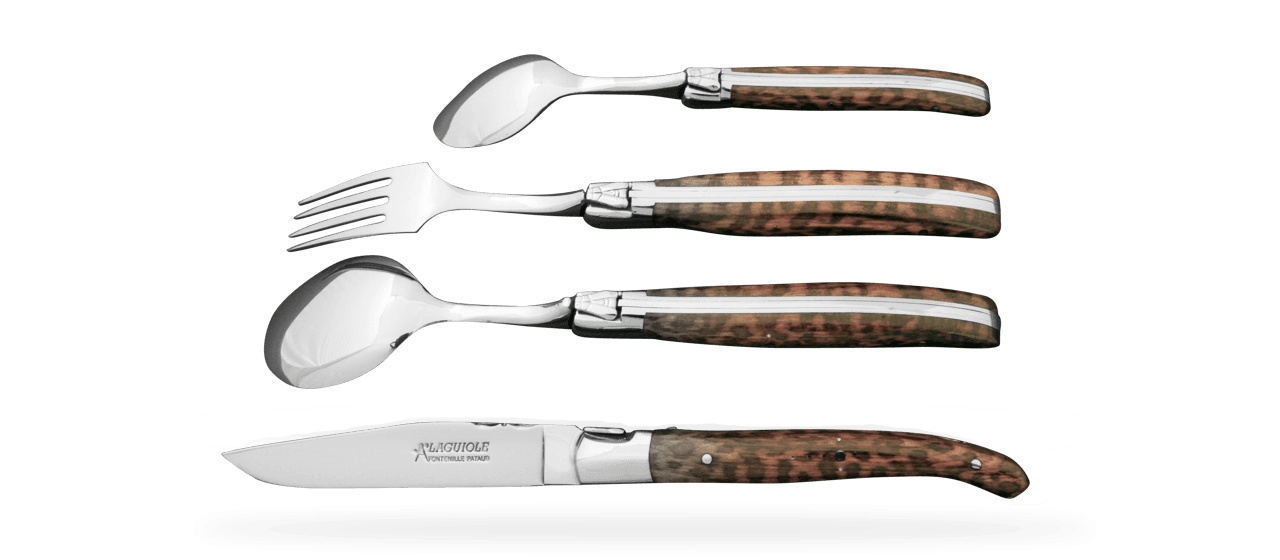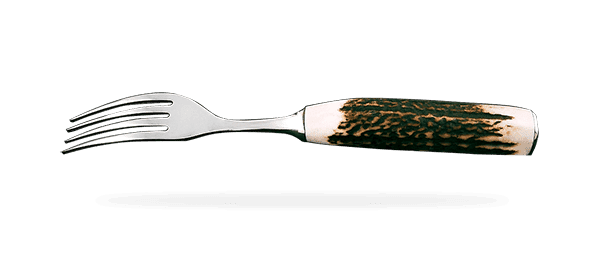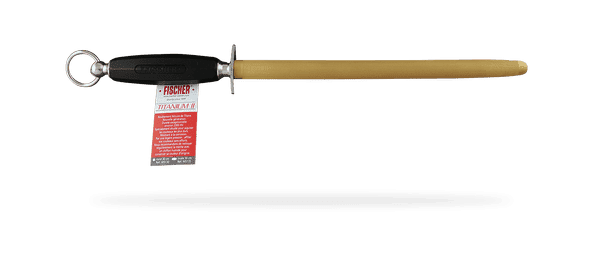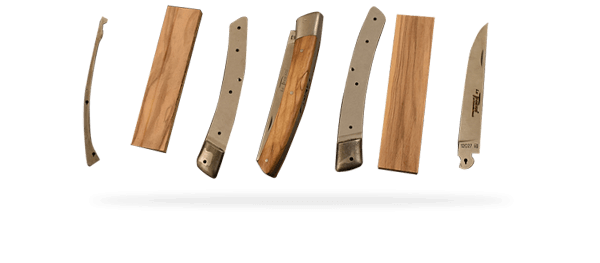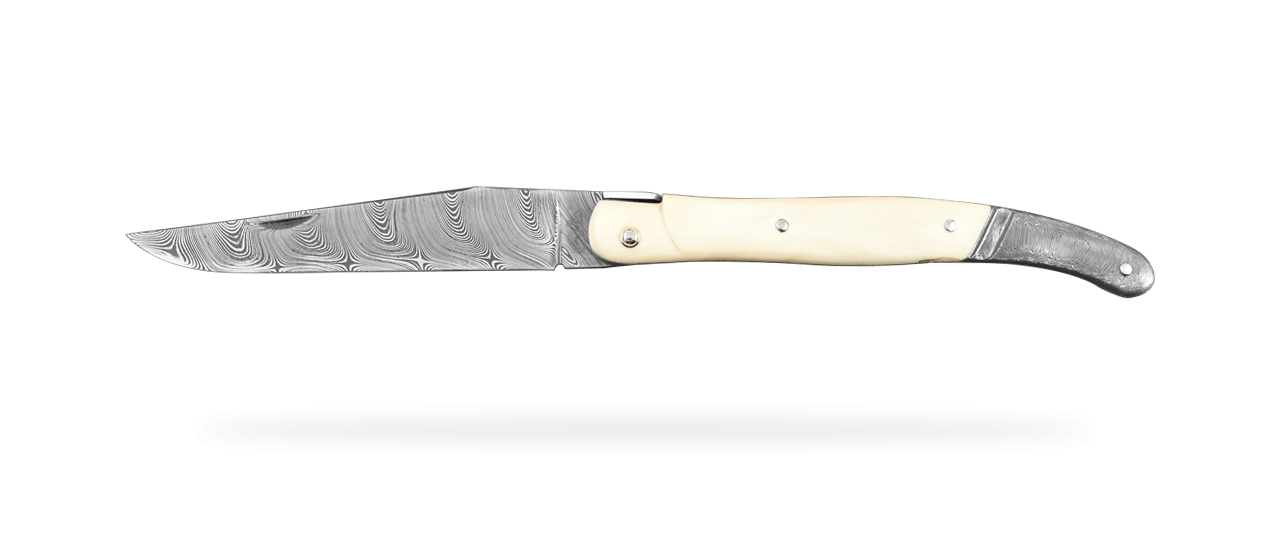The Elegance and Durability of Mammoth Ivory in Cutlery
Discover the Excellence of Fontenille Pataud Cutlery: Mammoth Ivory Handcrafted Knives, a Precious and Environmentally Respectful Heritage.
In the world of French cutlery, Fontenille Pataud has stood out for decades due to its commitment to excellence, artisanal craftsmanship, and environmental stewardship. At the core of this perpetual quest for quality, the company has embraced a unique approach by incorporating mammoth ivory into the crafting of its handcrafted knives, thus offering an experience that is both aesthetic and responsible.

A Natural and Historical Heritage
Mammoth ivory, the raw material used by Fontenille Pataud, is much more than just a material: it is a living testimony to the history of our planet. Derived from prehistoric creatures that roamed the earth millennia ago, this ivory provides an ecological and sustainable alternative to elephant ivory, thereby preserving contemporary species and the ecosystem.
Excellence in Craftsmanship: The Fontenille Pataud Know-How
Fontenille Pataud cutlery embodies the excellence of French craftsmanship. Each knife is meticulously crafted with unparalleled attention to detail, a result of expertise passed down through generations. The artisans of the house master the subtle art of working with mammoth ivory, revealing its natural beauty through unique pieces that are both functional and aesthetic.
The Timeless Beauty of Mammoth Ivory Knives
Fontenille Pataud's handcrafted mammoth ivory knives captivate with their timeless elegance and finesse. Each knife is a work of art in itself, enhanced by the subtle nuances and natural patterns of the ivory. Whether for daily use or to enrich a collection, these knives embody a perfect marriage of tradition and modernity, functionality and aesthetics.
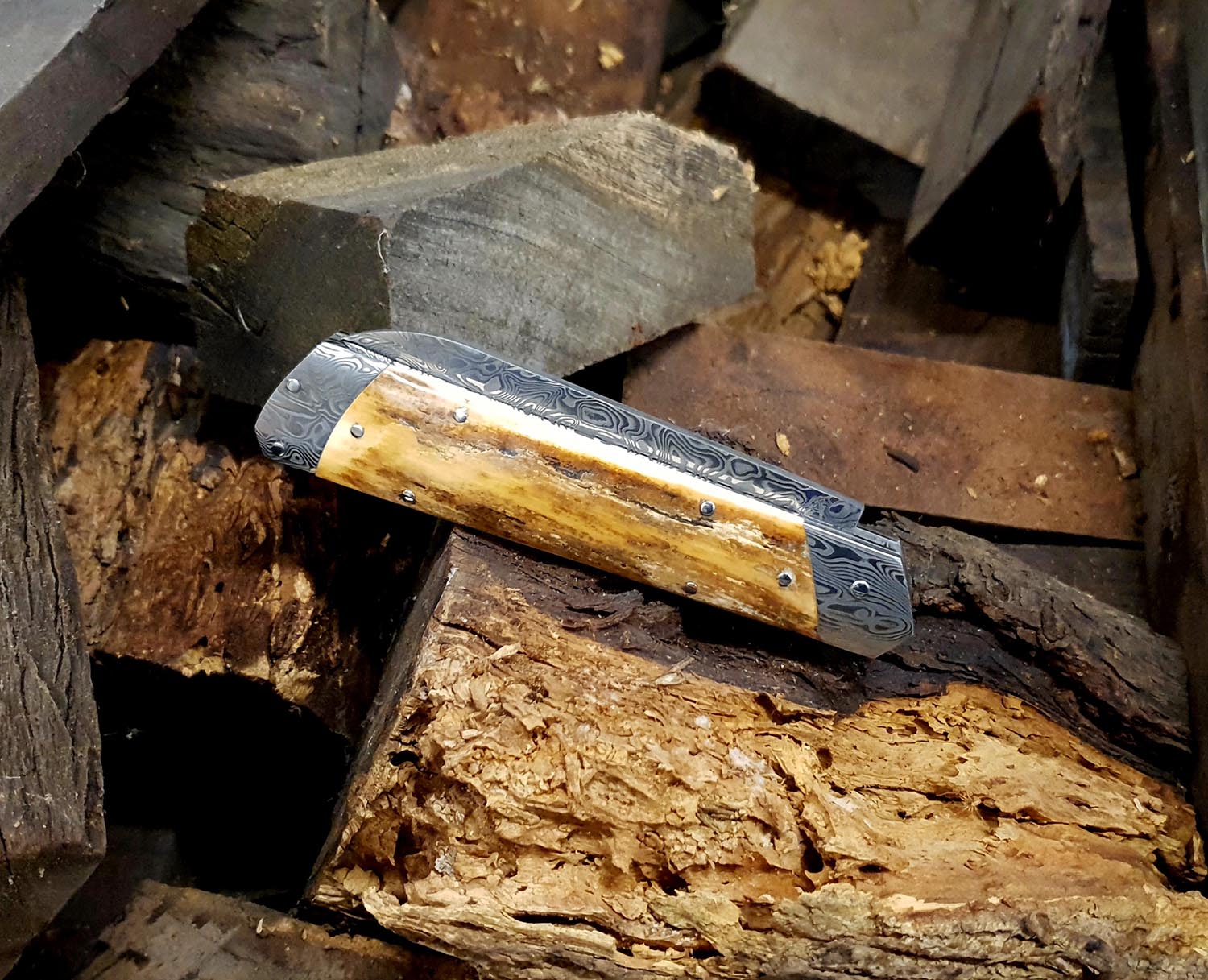
Ecological and Responsible Commitment
By choosing to use mammoth ivory, Fontenille Pataud actively engages in environmental preservation and the protection of animal species. This ethical and responsible approach resonates with the fundamental values of the company, which prioritizes a respectful approach to nature in all its activities.
An Invitation to Refinement and Responsibility
Fontenille Pataud's handcrafted mammoth ivory knives represent much more than mere cutting instruments: they symbolize a carefully preserved natural and historical heritage, exceptional craftsmanship, and a commitment to environmental preservation. By choosing a Fontenille Pataud knife, you opt for excellence, refinement, and responsibility, for a unique and sustainable cutlery experience.
Why is Mammoth Ivory Becoming More Common?
There are several reasons why mammoth ivory is becoming more prevalent in the market:
Archaeological and Paleontological Discoveries: With the improvement of exploration techniques and scientific tools, particularly in Arctic regions like Siberia, more and more mammoth remains are being discovered. These findings often include well-preserved tusks or ivory in the permafrost, making it possible to recover them in relatively good condition.
Melting Ice Caps: Climate change and the melting of ice caps in Arctic regions sometimes release mammoth fossils that have been trapped for millennia. This makes mammoth ivory more accessible to researchers, collectors, and artisans.
Commercial Interest: Mammoth ivory is garnering increasing interest in the market due to its rarity, fascinating history, and natural beauty. Collectors, artisans, and businesses actively seek out this ivory to create unique and prestigious pieces.
Regulations on Elephant Ivory: Due to increasingly strict regulations on the trade of elephant ivory to protect endangered species, mammoth ivory has become an attractive alternative for those seeking similar materials while avoiding detrimental consequences to contemporary wildlife.
Diverse Uses: Mammoth ivory is used in a variety of fields, including jewelry, sculpture, cutlery, and decoration. Its versatility and rarity make it a prized material for crafting high-value, high-quality objects.
In summary, a combination of archaeological discoveries, environmental changes, regulations on elephant ivory, and growing commercial interest contributes to the increased availability of mammoth ivory in the market.
The Work of Mammoth Ivory Throughout History
The history of mammoth ivory craftsmanship dates back thousands of years and is deeply intertwined with human civilization. Mammoths, prehistoric relatives of modern elephants, roamed the Earth during the Pleistocene epoch, which ended around 11,700 years ago. Mammoth ivory, derived from the tusks of these ancient creatures, has been utilized by humans for various purposes since prehistoric times.
Early humans recognized the value of mammoth ivory due to its durability, workability, and aesthetic appeal. Archaeological evidence suggests that mammoth ivory was used by ancient cultures for a wide range of purposes, including tools, ornaments, and artistic creations. In regions where mammoths were abundant, such as parts of Europe, Asia, and North America, mammoth ivory played a significant role in the material culture of ancient societies.
One of the earliest known uses of mammoth ivory is for the production of tools and weapons. Archaeologists have discovered mammoth ivory spear points, harpoons, and cutting tools dating back tens of thousands of years. The excellent properties of mammoth ivory, including its hardness and resistance to decay, made it an ideal material for crafting functional implements essential for survival in ancient times.
In addition to its utilitarian uses, mammoth ivory was also valued for its decorative and symbolic significance. Ancient artisans carved mammoth ivory into intricate figurines, amulets, and religious objects, often depicting animals, humans, and mythological creatures. These carvings served various purposes, including religious rituals, personal adornment, and trade.
The craftsmanship of mammoth ivory reached its peak during the Upper Paleolithic period, between 50,000 and 10,000 years ago. This era saw the emergence of sophisticated artistic traditions, characterized by finely detailed carvings and sculptures crafted from mammoth ivory and other materials. Examples of exquisite mammoth ivory artwork from this period have been unearthed at archaeological sites across Europe and Asia, providing valuable insights into the cultural and artistic achievements of ancient societies.
Despite the decline of mammoths and the disappearance of ancient civilizations, the tradition of mammoth ivory craftsmanship has endured to the present day. Modern artisans continue to create exquisite works of art using mammoth ivory, employing traditional techniques passed down through generations and incorporating contemporary innovations. Today, mammoth ivory remains highly prized for its beauty, historical significance, and ecological sustainability, serving as a testament to the enduring legacy of these majestic creatures and the creativity of humankind.
Where to Find Mammoth Ivory?
Fragments of mammoths are typically discovered in regions where these prehistoric creatures lived and thrived. Here are some of the regions around the world where mammoth fragments are frequently found:
Siberia: Siberia, in Russia, is one of the primary regions where mammoth remains are regularly discovered. The vast expanses of Siberian tundra, especially within the permafrost, have preserved numerous mammoth fossils for millennia.
Alaska: Areas of Alaska, particularly along the northern coast and in the interior plains, are also known for their discoveries of mammoth fragments. Alluvial deposits and frozen terrains have preserved many mammoth remains in this American state.
Canada: Some parts of Canada, such as the Yukon and the Northwest Territories, have also yielded discoveries of mammoth fragments. The cold climatic conditions and vast wilderness of these regions have facilitated the preservation of fossilized remains.
Europe: Mammoth fragments have also been discovered in certain parts of Europe, including France, Germany, Ukraine, and Great Britain. While less common than in Arctic regions, these finds also provide valuable insights into the geographic distribution and history of mammoths.
Central Asia: Discoveries of mammoth fragments have also been reported in countries of Central Asia such as Kazakhstan and Uzbekistan. These regions are home to expanses of steppe and desert where fossilized remains can be preserved.
In summary, mammoth fragments are often found in Arctic and subarctic regions of the world, where cold climatic conditions and frozen terrains have enabled the preservation of these prehistoric remains for millennia.
The mammoth story
The history of mammoths is a fascinating journey spanning millions of years. Here's an overview:
Mammoths were large, woolly relatives of modern elephants that roamed the Earth during the Pleistocene epoch, which lasted from about 2.6 million years ago to around 11,700 years ago. They were well-adapted to cold environments, with long, shaggy coats, large curved tusks, and a humped back.
Mammoths evolved from earlier elephant-like ancestors and diversified into several species across different parts of the world. Some of the most well-known species include the woolly mammoth (Mammuthus primigenius) of the Northern Hemisphere, the Columbian mammoth (Mammuthus columbi) of North America, and the dwarf mammoths of various islands.
These magnificent creatures inhabited a wide range of environments, including grasslands, tundra, and even semi-tropical forests. They played a crucial role in shaping the ecosystems they inhabited, influencing vegetation through grazing and providing a food source for predators.
The extinction of mammoths is a subject of ongoing scientific debate, but it is widely believed to have been caused by a combination of factors, including climate change, habitat loss, overhunting by early humans, and possibly disease. The last surviving populations of mammoths existed on isolated islands, such as Wrangel Island in the Arctic Ocean, until around 4,000 years ago.
Despite their extinction, mammoths continue to capture the imagination of people around the world. Their remains, including bones, tusks, and even frozen carcasses preserved in ice, have provided valuable insights into their biology, behavior, and interactions with ancient humans.
In recent years, there have been discussions about the possibility of bringing mammoths back to life through advanced genetic engineering techniques. While still speculative, such endeavors highlight the enduring fascination with these iconic creatures and their place in Earth's history.

